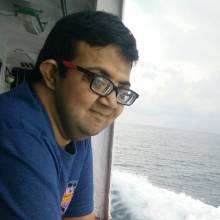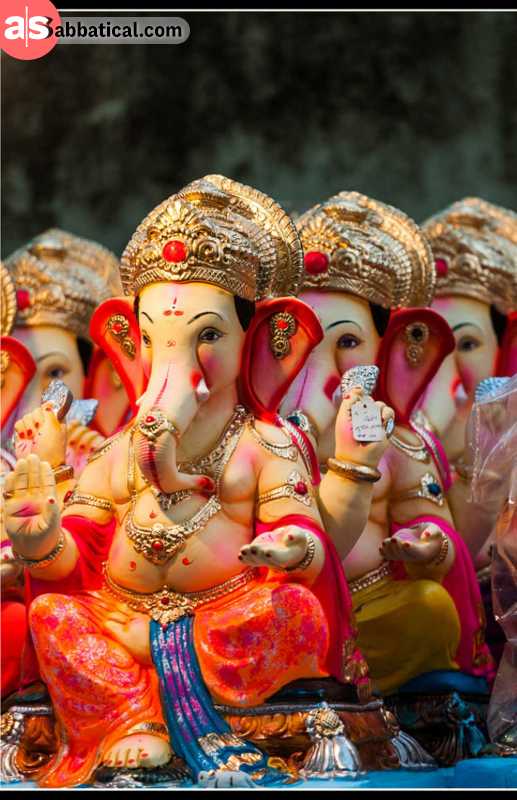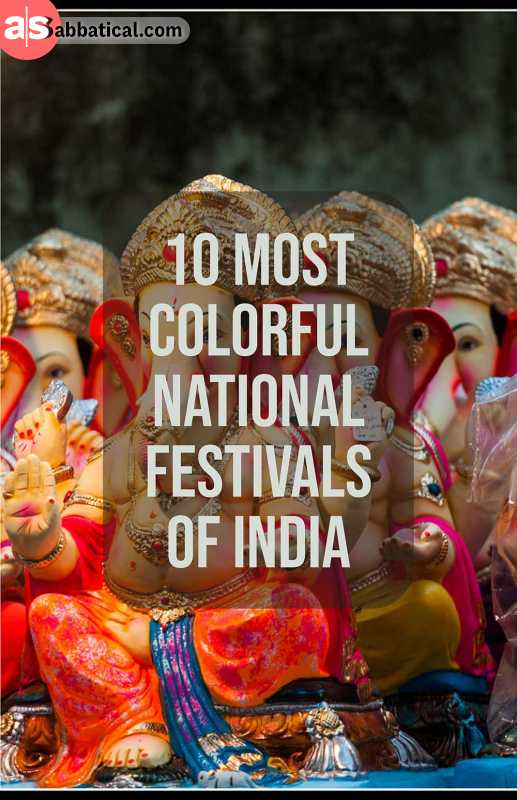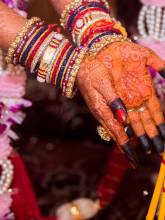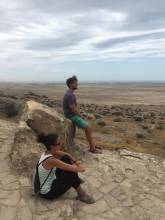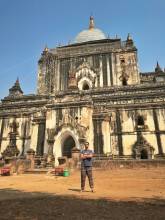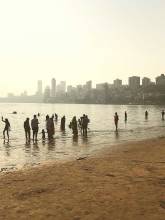10 Most Colorful National Festivals of India
As much as there is variation in landscape and climate of India , there is variation in the religious practices. Actually, this list is so long that you can find a festival almost every day in one corner or the other. But in spite of these variations, there are national festivals of India known and/or celebrated all over the country for the sheer fun and enjoyment they bring and holidays.
, there is variation in the religious practices. Actually, this list is so long that you can find a festival almost every day in one corner or the other. But in spite of these variations, there are national festivals of India known and/or celebrated all over the country for the sheer fun and enjoyment they bring and holidays.
To include all the national festivals of India in a list isn’t possible, so, here are some of the most popular and colorful ones among them.
#1: Holi

What better than Holi to be the first on this list. After all, it’s the festival of colors. It’s one of the most colorful festivals in India, and people drench each other in colored water. Elderls though, prefer dry, powdered colors (gulal). The best clothes your can bring to Holi are white T-shirts which will be soaked in various colors very soon!
Read more: 27 Interesting Facts about Holi
Often falling sometime in March, Holi marks the onset of spring, and people gather in open areas with water guns and water balloons to celebrate.
Holi also signifies the victory of good over evil and people burn the pyre of Holika (the evil) on the evening before Holi. Although celebrated all over India, the liveliest celebrations take place in Mathura and Vrindavan.
When and where: All over India, in March
#2: Diwali (or Deepavali)

People of Ayodhya celebrated the return of Lord Rama after he defeated Ravana and the same continues. Everyone decorates their homes with candles, clay lamps (diyas) and fancy lights. Because of that, Diwali is called the Festival of Light in India.
Celebrated on the new moon night of the Kartik month of Hindu calendar, Diwali signifies the power of light over darkness. Diwali is also celebrated among Sikh followers.
On this day (night), which falls on a date around November, people exchange gifts and sweets. They make colorful rangoli (drawings) on floors. And the most important feature of this festival is the bursting of crackers which people all over the country perform.
When and where: All over India, around November
#3: Durga Puja

Durga Puja is one of the most important national festivals of India. Although popular in Bengal, this 10-day festival is celebrated in different forms everywhere in India. In Gujarat and many parts of the country, people celebrate Navratri (for nine days) and the 10th day is Dussehra (or Vijayadashami). The significance of Navratri among the people of Gujarat is huge.
Read more: What is the Significance of Durga Puja?
Whatever be the form, Durga Puja is known for the grandeur it accompanies. People fast and feast as well. There are cultural programs, songs, and dances organized at many places. People visit the puja pandals to see the idols (especially in Bengal). Pandals are large canopies decorated to worship Goddess Durga.
The story of Navratri revolves around the battle between the goddess Durga and the demon Mahishasura. It celebrates the victory of the Divine Beings over the Demonic Beings.
The entire evenings of Navratri, people participate in Garba and Dandiya Raas (both are traditional dance forms). Different days represent different avatars of Durga and the last day is when Lord Rama killed Ravana. Yes, Durga Puja is celebrated a few days before Diwali, sometime in October or the last days of September.
When and where: All over India, around September-October
#4: Ganesh Chaturthi

Ganesh Chaturthi is the birthday of Lord Ganesha (around August-September), and the celebration lasts for 8-10 days. People keep his images and idols in their house and worship it daily. There also are big pandals where idols are kept and worshipped. If you want to see the excitement and different colors of this festival, you should visit Mumbai. Though in present times, Ganesh Chaturthi celebrations take place in many parts of India.
The last day is the visarjan – immersion of idol into a body of water. Millions of people take part in the procession accompanied by drumbeats and chanting “Ganpati Bappa Morya” (Lord Ganesha bless us). And of course, singing and dancing.
When and where: In the state of Maharashtra, around August-September
#5: Janmashtami

The birthday of Lord Krishna, Janmashtami is celebrated throughout the country. ISKCON (an organization devoted to Krishna) temples are decorated beautifully, and people visit and pray there. The celebrations in the cities of Mathura and Vrindavan are the most spectacular though. People pray, dance and sing bhajans (hymns) and break the day-long fast at midnight.
Read more: Most Impressive Palaces in India
In Mumbai, fun-filled dahi handi celebrations are organized in many places. People make human pyramids to break a clay pot (handi) filled with butter and milk. The successful group gets rewarded. Words can’t describe the adventure, see it live someday. It usually falls in August.
When and where: All over India, in August
#6: Mahashivratri

Mahashivratri Festival is dedicated to Lord Shiva. People all over the country offer milk, curd, water, and honey to Shiva at temples and many girls keep fast to get a good husband, someone like Lord Shiva. Yes, he is considered a good husband.
Apart from water and milk, devotees also offer flowers of Datura and weed. Oops! It’s not weed, but a mild version called bhaang. The most splendid Mahashivratri celebration is held in Mandi (in Himachal Pradesh). There is a week-long fair at the temple of Bhootnath which sees lots of tourists. If you too want to enjoy, be there in February.
When and where: All over India, in February
#7: Bihu

Bihu is a harvest festival, celebrated thrice in a year in Assam, the pompous one though is in April. Bihu festival is definitely the most interesting one on the list of festivals in Assam. Week-long fairs are held, feasts are organized, and people dance (Mukoli Bihu) in traditional attires and sing Bihu geet. Be part of their celebrations; anyone can join.
Read more: The Awesome Food During the Bihu Festival!
In mid-April, falls the Assamese New Year when this festival is celebrated. Bihu is also observed in January and October.
When and where: In the state of Assam, mid-April
#8: Onam

Onam is celebrated in Kerala to welcome (the soul of) King Mahabali. People make pookalam (designs with flowers) in their courtyard and prepare onasadya (an elaborate meal) for him. The celebrations continue for ten days, accompanied by Kathakali (a traditional dance form) and the pulikali procession, performance by trained artists, dressed like tigers.
Celebrated sometime in August-September, the highlight of the festival is Vallamkali, a race of beautifully decorated snake boats.
When and where: In the state of Kerala, in August-September
#9: Pongal

Pongal is a harvest festival celebrated in Tamil Nadu. It’s a four-day long festival which starts with a bonfire. People offer the Pongal dish to Sun God, a sweet dish made of boiled milk and rice, Bananas, sugarcanes, and coconuts also are on offer. Also, people decorate their houses with kolam (designs made by colored powders, rice and flower petals).
Although famous in the southern part of India, people celebrate different festivals all around the country during that time, in mid-January. Makar Sankranti is celebrated across north India for the same purpose, In Gujarat, people indulge in kite flying on this day, and these kites are of varying shapes, sizes and colors.
This kite flying now has spread in many parts of the country and sky becomes alive for those few days.
When and where: In the state of Tamil Nadu, mid-January
#10: Hemis

Another one of the colorful national festivals of India is celebrated in Ladakh, on the occasion of birth anniversary of a Tibetan spiritual leader Padmasambhava. People dress up in traditional clothes and priests perform the Cham dance wearing colorful outfits and masks. Trumpets and drums play classical music alongside.
Read more: 10 Unique Ski Resorts in India
The most spectacular version can be enjoyed at the Hemis monastery, the largest monastery in Ladakh. And the two-day celebration takes place on the 10th day of the Tibetan lunar month, Tse-chu. The days fall on the last days of June or in July.
You can also visit the Hemis National Park that is nearby. It is famous for having the highest density of snow leopards in the world.
When and where: In Ladakh, Jammu & Kashmir, in June-July
So, why not pack-up for a year-long vacation and experience the national festivals of India?

Along with the fun, you get to enjoy many traditional Indian dishes. Not only is the Pongal, each festival come with a unique (sweet) recipe. Be it modaks during Ganesh Chaturthi or sabudana khichdi during Navratri; there is a myriad of dishes available.


